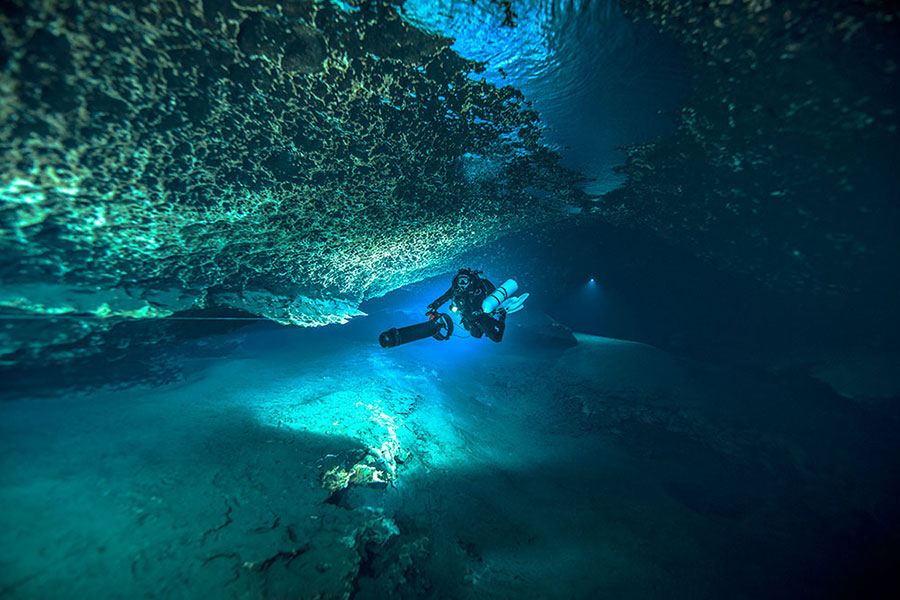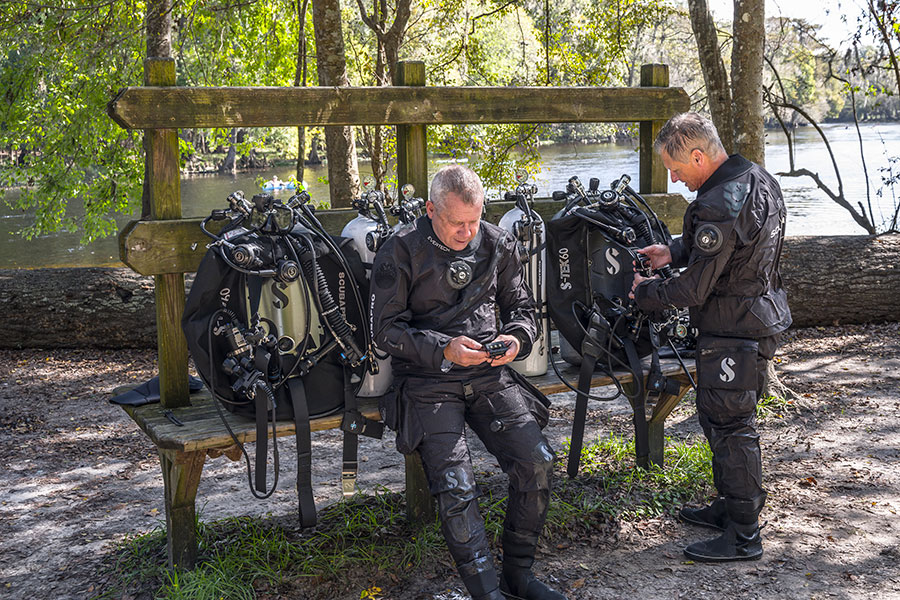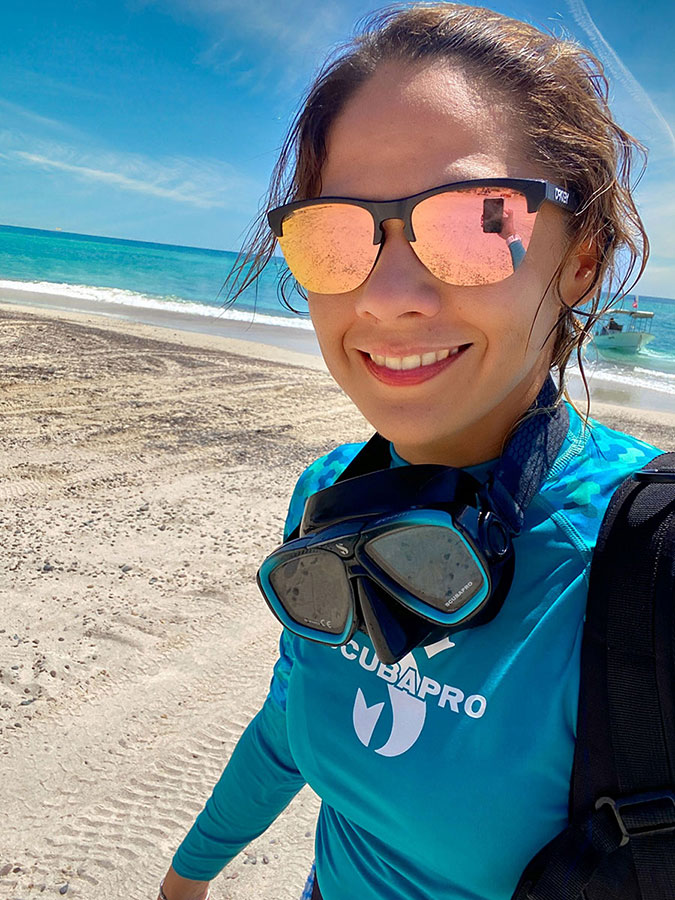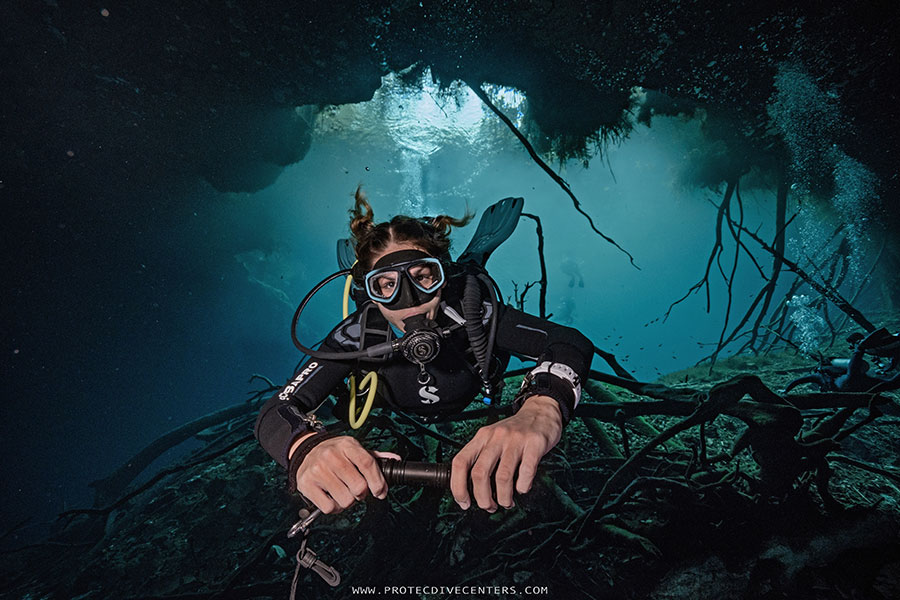Learning to Tech Dive

Technical diving is one of the many paths we can choose as avid scuba divers. As our hours underwater increase, we often start looking for activities we can take underwater including photography, citizen science, wreck history, and new challenging dive locations. This is where tech diving becomes important.
Tech diving allows us to safely dive beyond recreational limits and offers a wide range of thrills that captivate many different types of divers. There is a sense of exploration, precise gear configuration, meticulous dive planning, skills practice, new courses and knowledge, intense focus on the dive objective, and a strong bond between buddies.
The dive environments vary widely, from deep dives, to caves, to ice, to wreck dives, to cold water.
The skills acquired during tech dive courses and subsequent practice not only allow us to dive in a new environment, but will help make us better recreational divers as well. The more we learn and practice, the better divers we'll become. Most technical divers maintain a training regimen to keep their skills fresh, and many even "train up" before big trips or dives to ensure they're as prepared as possible. And while this can be a lot of fun, it's a commitment that must be made to dive these environments safely.
Technical Diving Gear
Most tech diving requires specialized gear configured for the dive objective. One of the largest considerations is redundancy and ability to quickly implement a contingency plan should there be a problem. A simple example is cave divers carrying a backup mask in their pocket. Exposure protection is another basic consideration. Cold water divers and those with extended dive times will almost always choose a drysuit to ensure they stay warm. Of course, you don't need to be doing a technical dive to enjoy the benefits of a drysuit. Life support gear, including regulators and tank configuration, depends on personal preference provided it meets the requirements for the dive. For example, cave divers will often wear a set of double tanks on their back or clip a tank to each side of their body (sidemount). Deep divers may blend a variety of gases in traditional cylinders with standard regulators, while some may opt for a rebreather. The SCUBAPRO S-Tek line was designed to meet the varying demands of technical diving. Each system can be configured for a single tank, double tanks, and side mount, plus a wide variety of accessories Each of these gear configurations has pros and cons that are best discussed with your technical diving instructor prior to your first course.

Considerations for Selecting a Technical Dive Course
Safe technical diving relies on high quality training. Many instructors will live local to areas where you'll conduct your training, so an easy way to begin your research is to start with your dive destination. Be sure to seek out instructor recommendations from peers and then see if the instructor's teaching style matches your learning style. Some locations may be well situated to help you gauge a real interest in taking a tech diving course. A great example of this is the cenotes in Mexico. All open water divers can book guided dives through these caverns (which have bright exit points within close range) and get a taste for diving in true cave environments. We must warn you though, divers who begin learning technical diving often find a renewed passion in diving – it's all they can think about!
Ambassador Story: The Cave Diving Course
By Reyna Amezcua
Location: Mexico
Learn more about Reyna on her Ambassador Page

In years past, I would look at photos of divers underwater carrying several tanks, two regulators, 3 lights, a thousand clips, helmet, extra pockets, slate, compass, cables, and hoses everywhere, feeling overwhelmed just imagining the amount of work that goes into carrying and using all this gear.
I've been a divemaster for a few years - a fan of the ocean and the freedom that it makes me feel - but the thing I didn't see coming was loving the Mexican cenotes after just one dive. The underground formations, the momentum, the dramatic lighting, and all the mystery of the caves helped shed my false fears and hesitations in starting technical diving. I was hooked and started training just to spend more time in Xibalbá (the underworld in Mayan.
Cave diving is considered technical diving since we have a ceiling that prevents us from going directly to the surface. This is the same as diving under ice or inside shipwrecks, and even the decompression ceiling on deep dives.

Learning Technical Diving
To be honest, at first, I had false fears about learning to cave dive. I say false because I wasn't afraid of being in a dark place with zero visibility but was afraid of my mind playing tricks on me. This has been the biggest challenge in my training, but it turns out that patience and taking baby steps was the right way to eliminate those thoughts.
By taking the dark side (that's what we call tech diving), you enter a beautiful world, and not just in the traditional sense. It turns out that in technical diving we always work as a team to ensure our safety, learning to use many tools, moorings, and signs that would have been useful to learn in my Open Water course.
The training has been tough but worth it, and after doing exercises over and over again and completing all the tasks required, I have the satisfaction of mastering each unlocked skill.
My cave diving course turned fears into skills, and my vision of diving has undoubtedly changed. This has been my favorite course. Don't let people tell you that tech diving isn't fun! I'm still gaining valuable experience and know that practice is everything.
There were 3 fundamental factors in growing beyond my fears. The first was my instructor who has been patient and dedicated, the second was the practice that helped memorize new movements, and the third was having the right equipment for my needs. I believe the best gear configuration is the one that fits you best and allows you to feel comfortable in the water.
The most valuable lesson I've learned in this first step of tech dive training is that I must be patient and learn little by little – walking before running.






